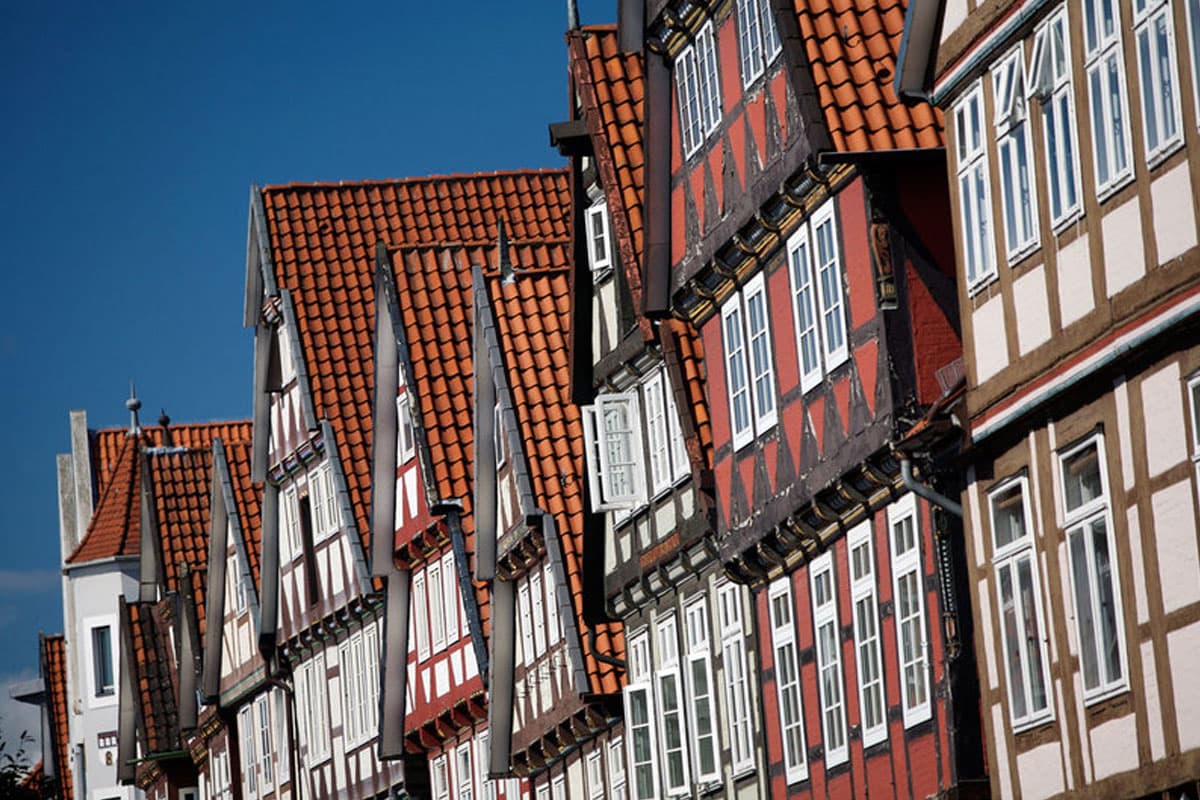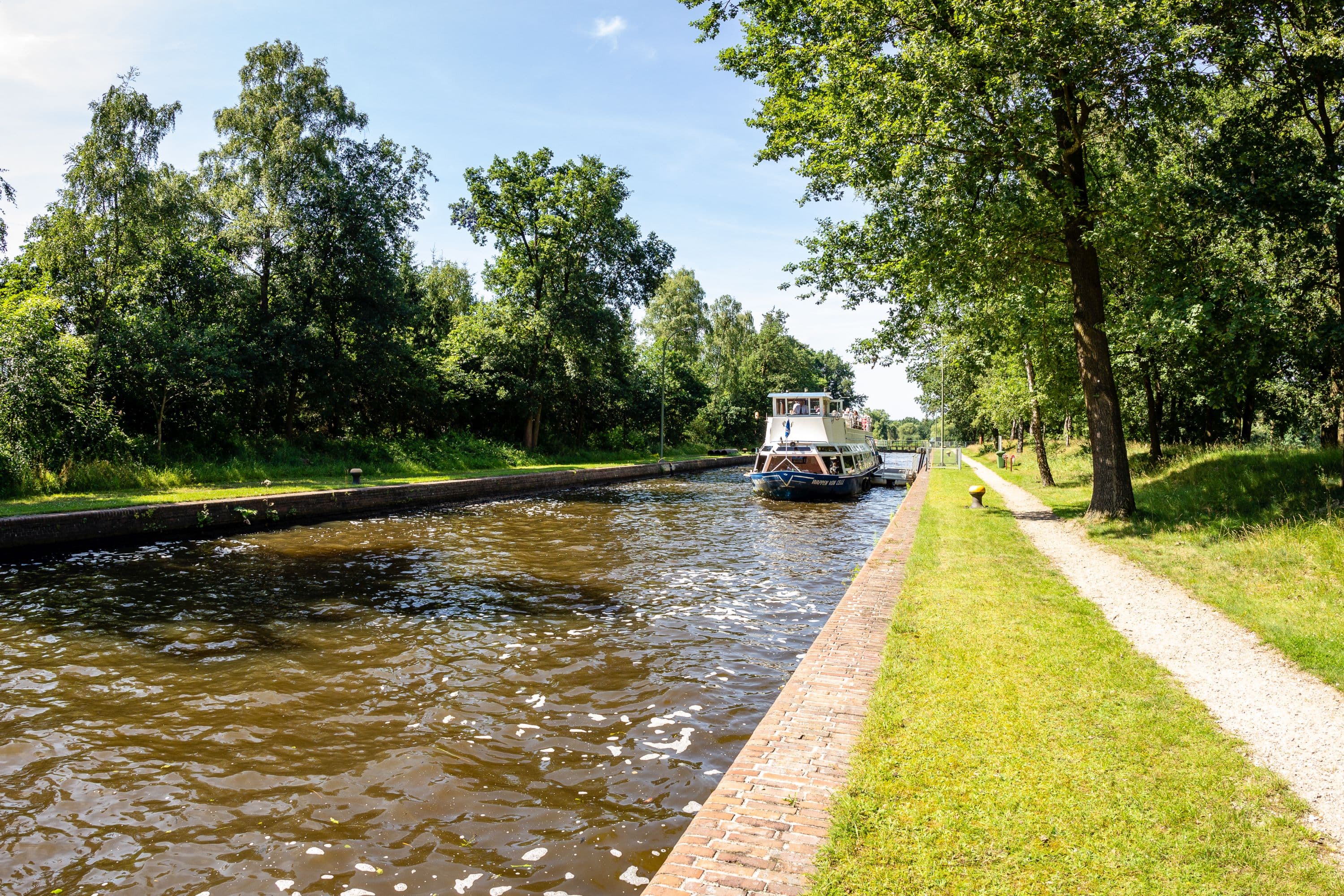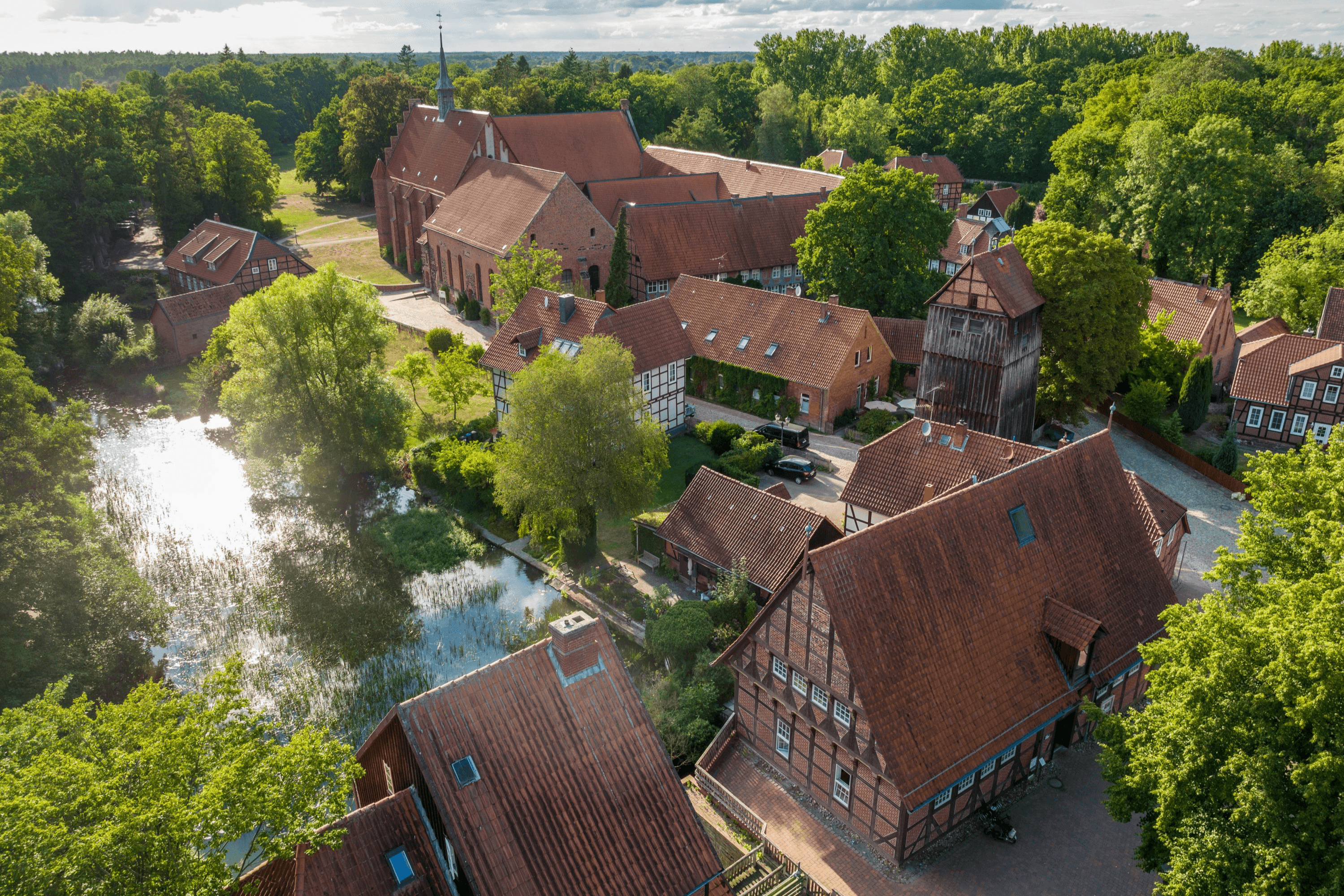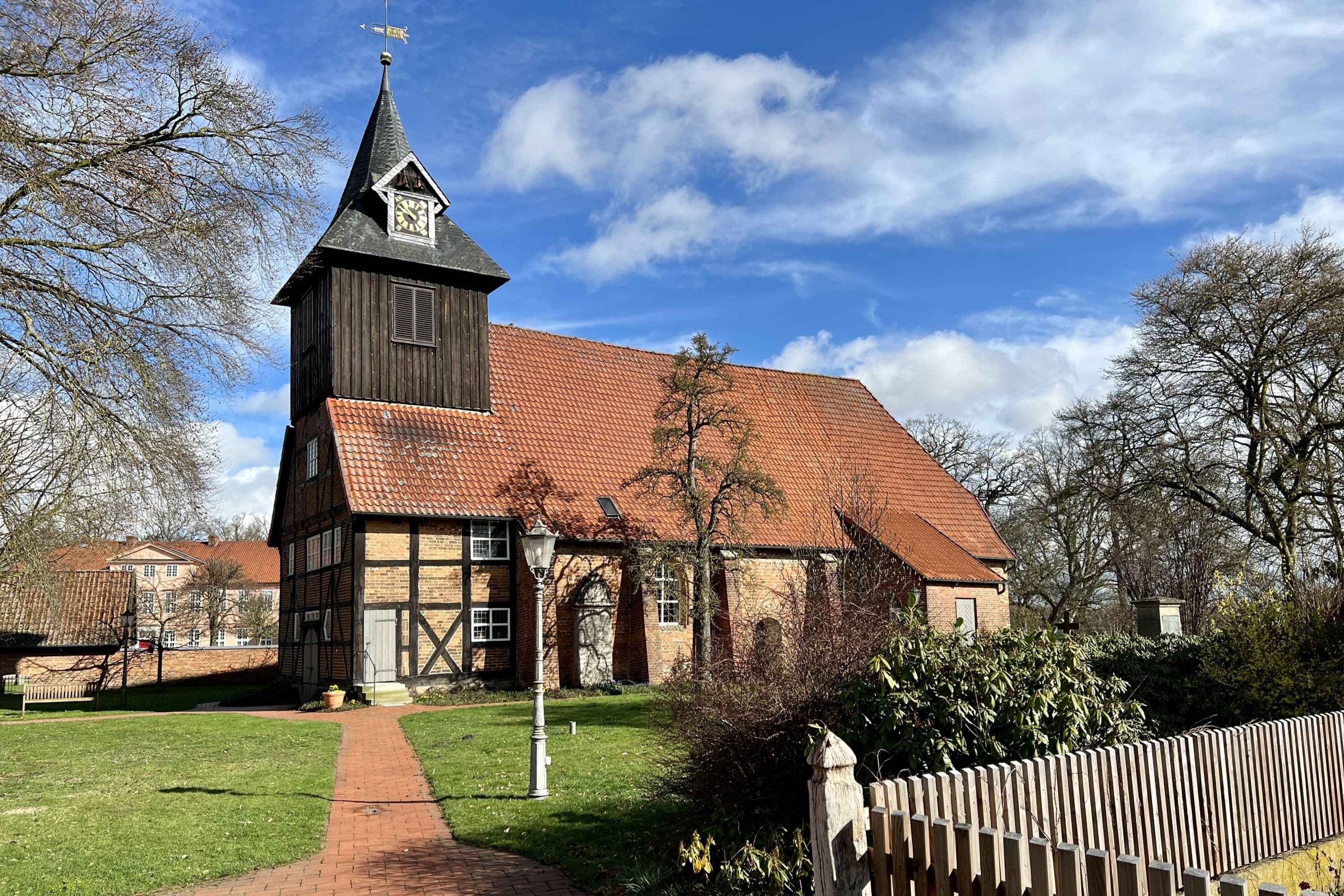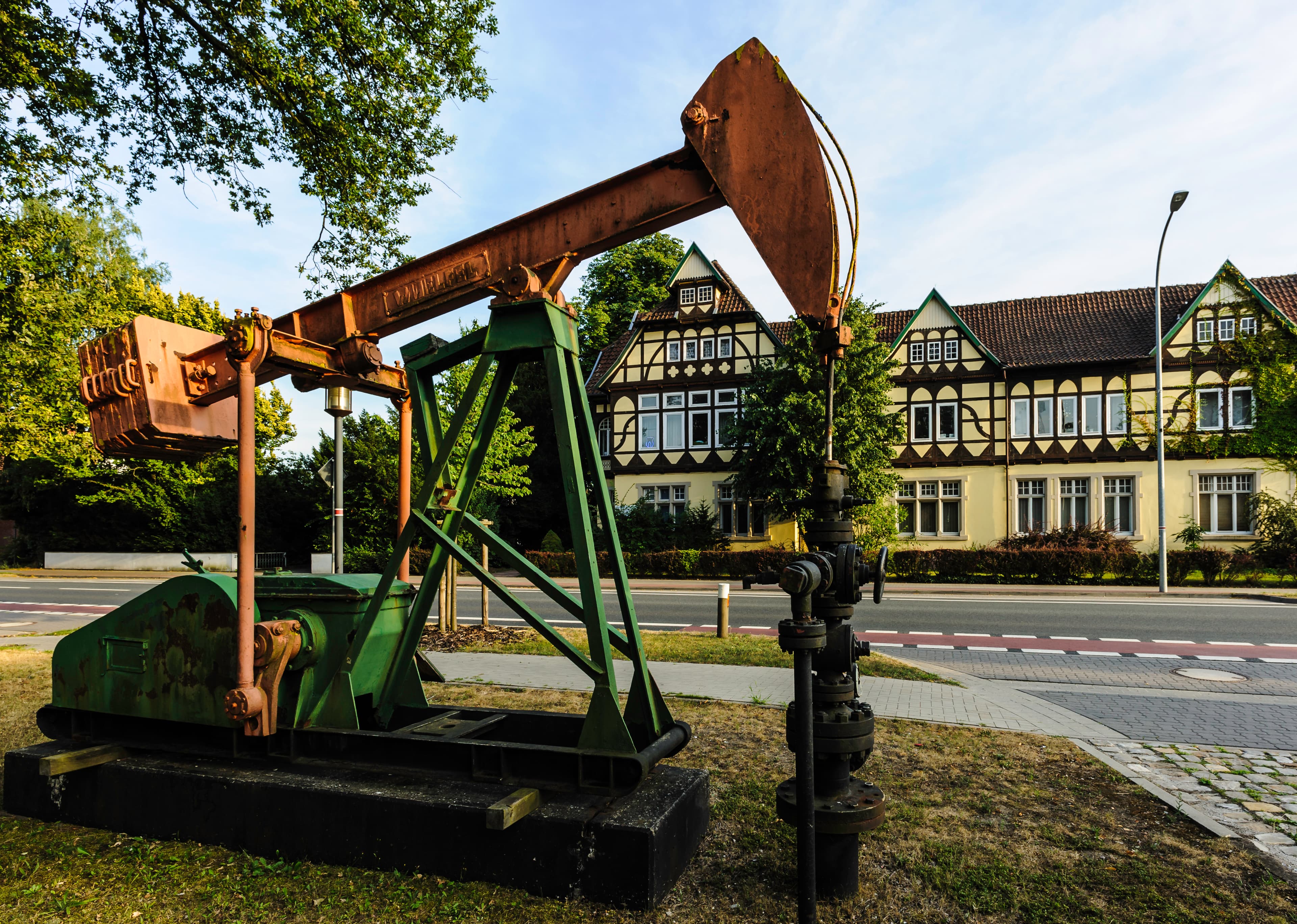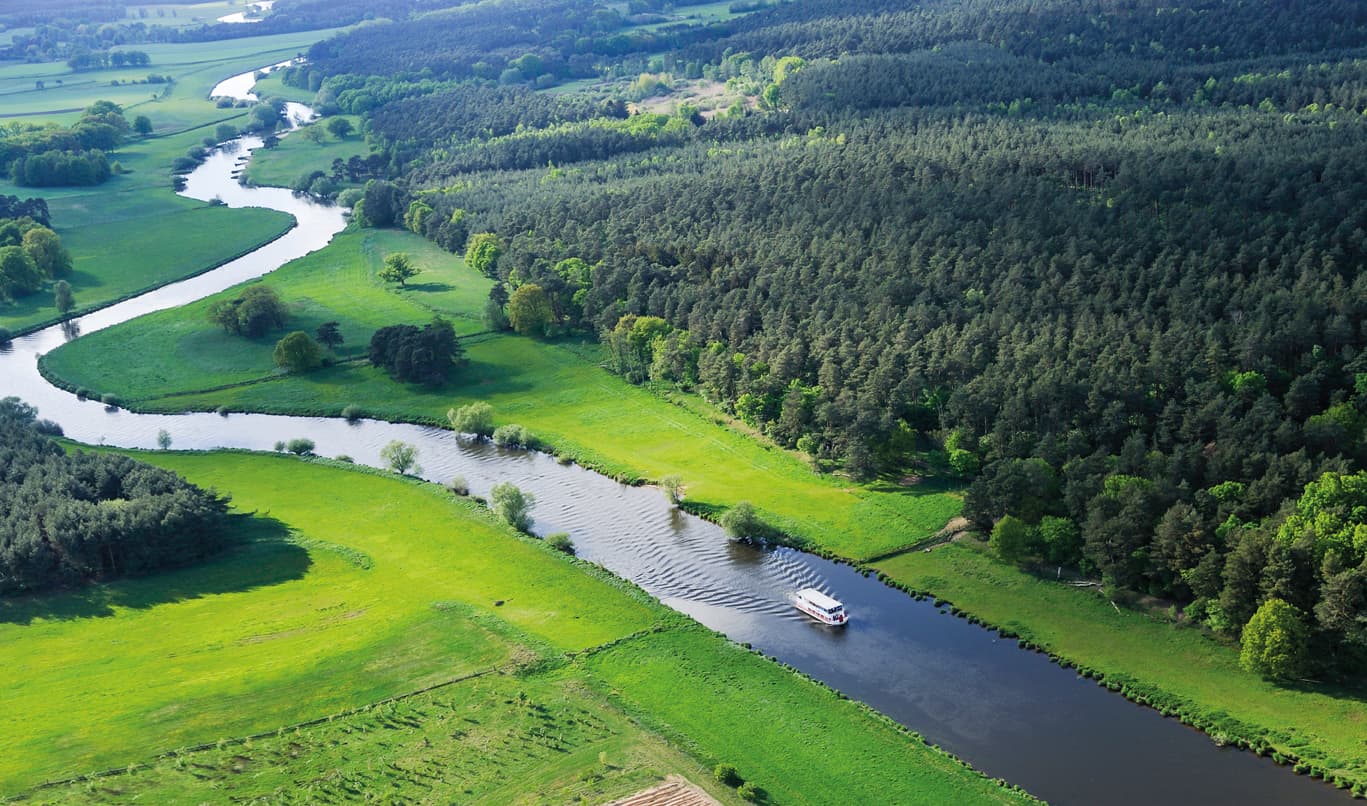
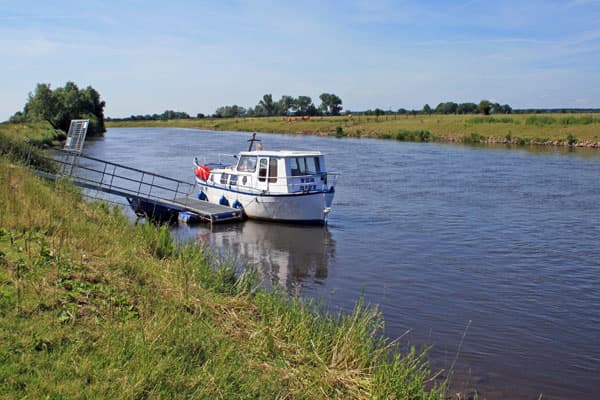
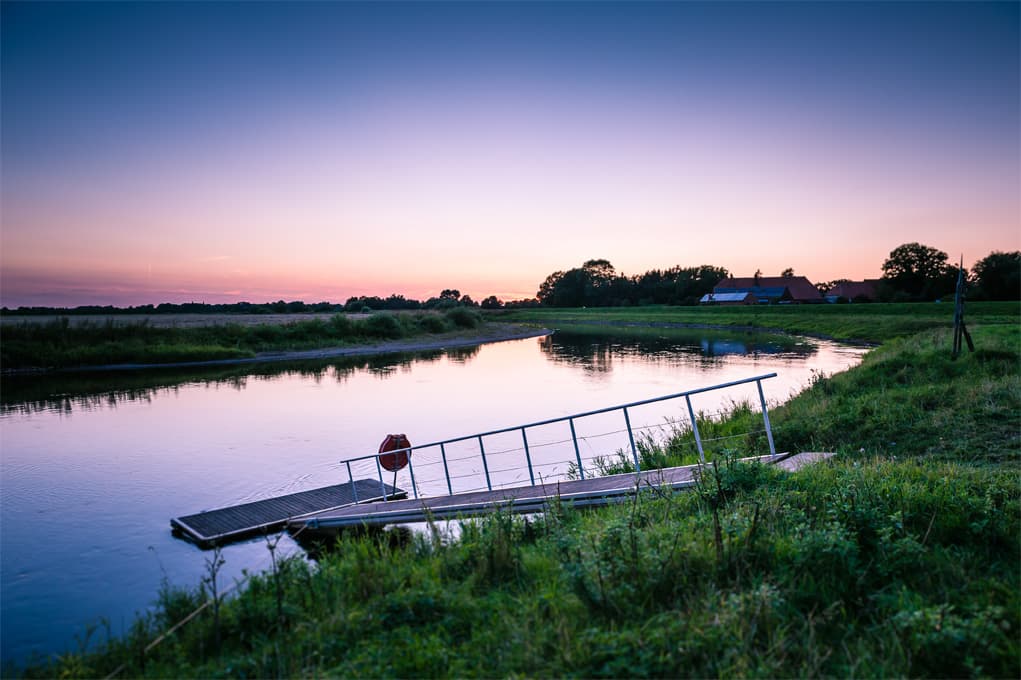
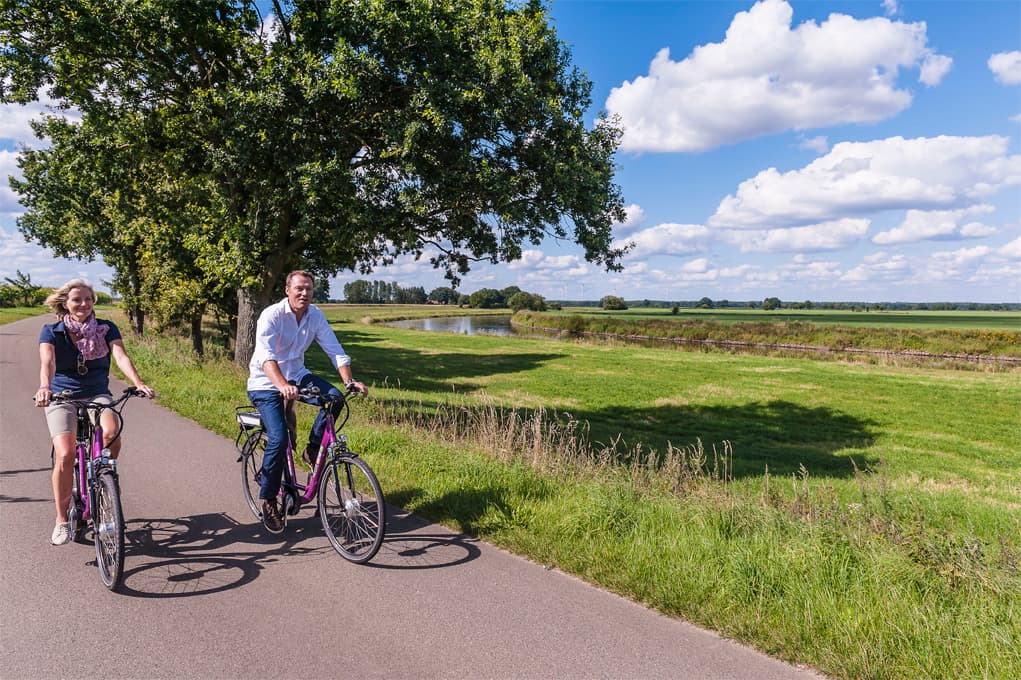
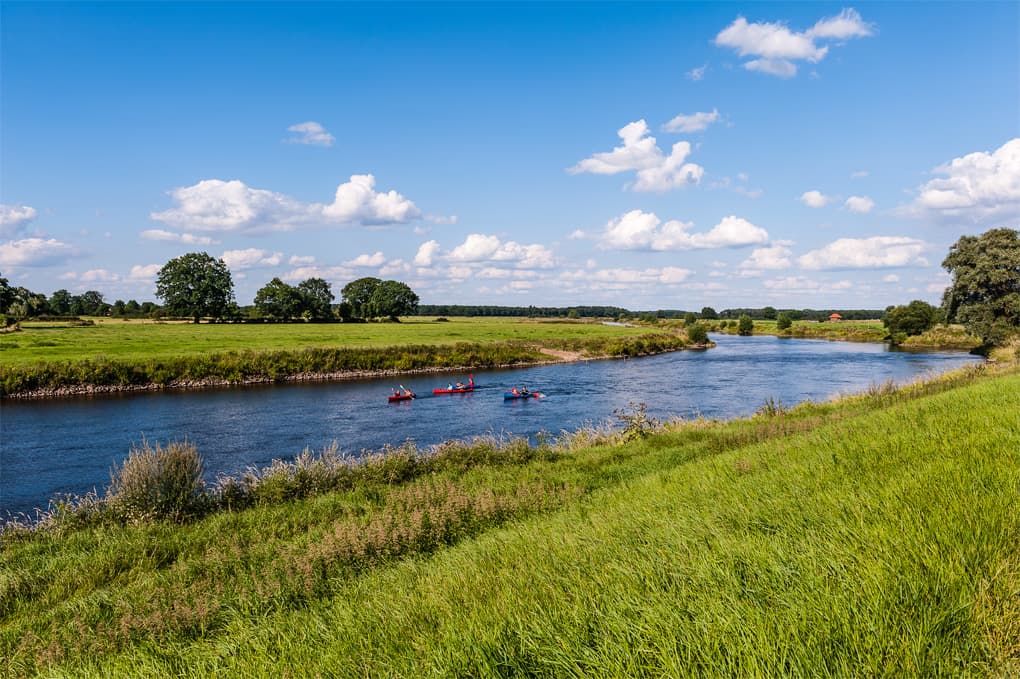
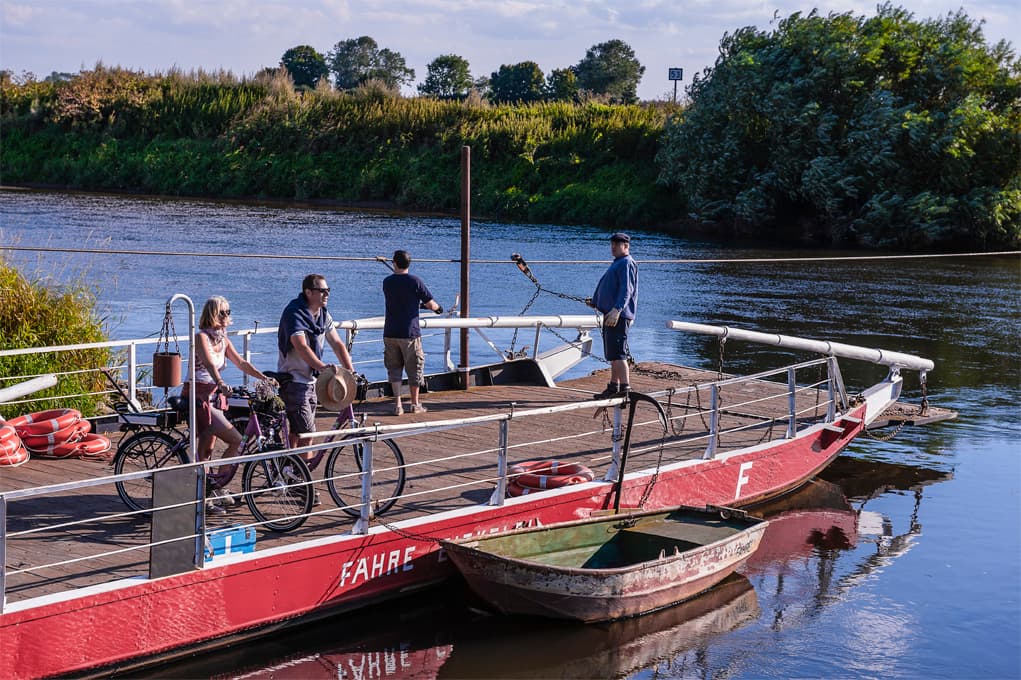
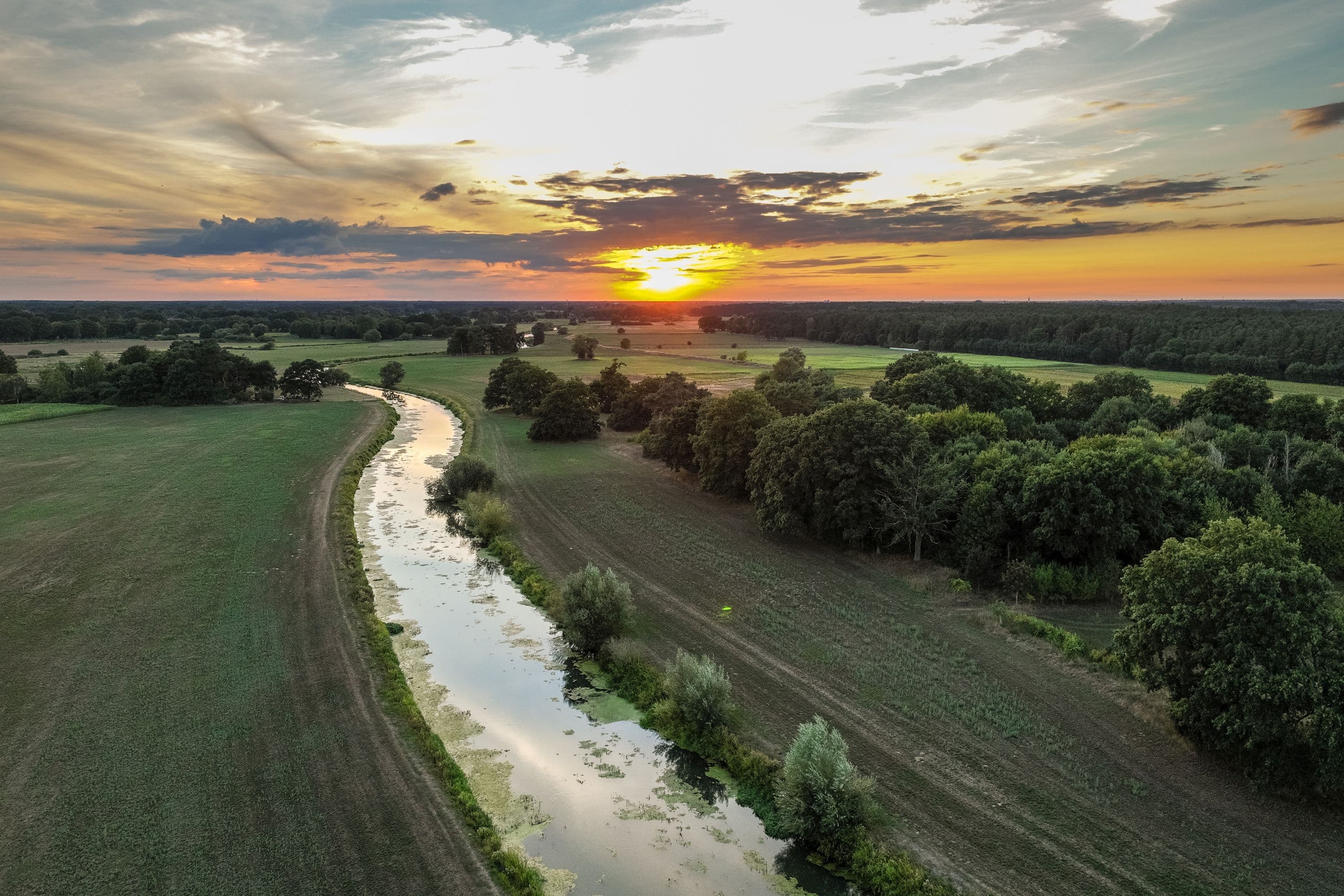
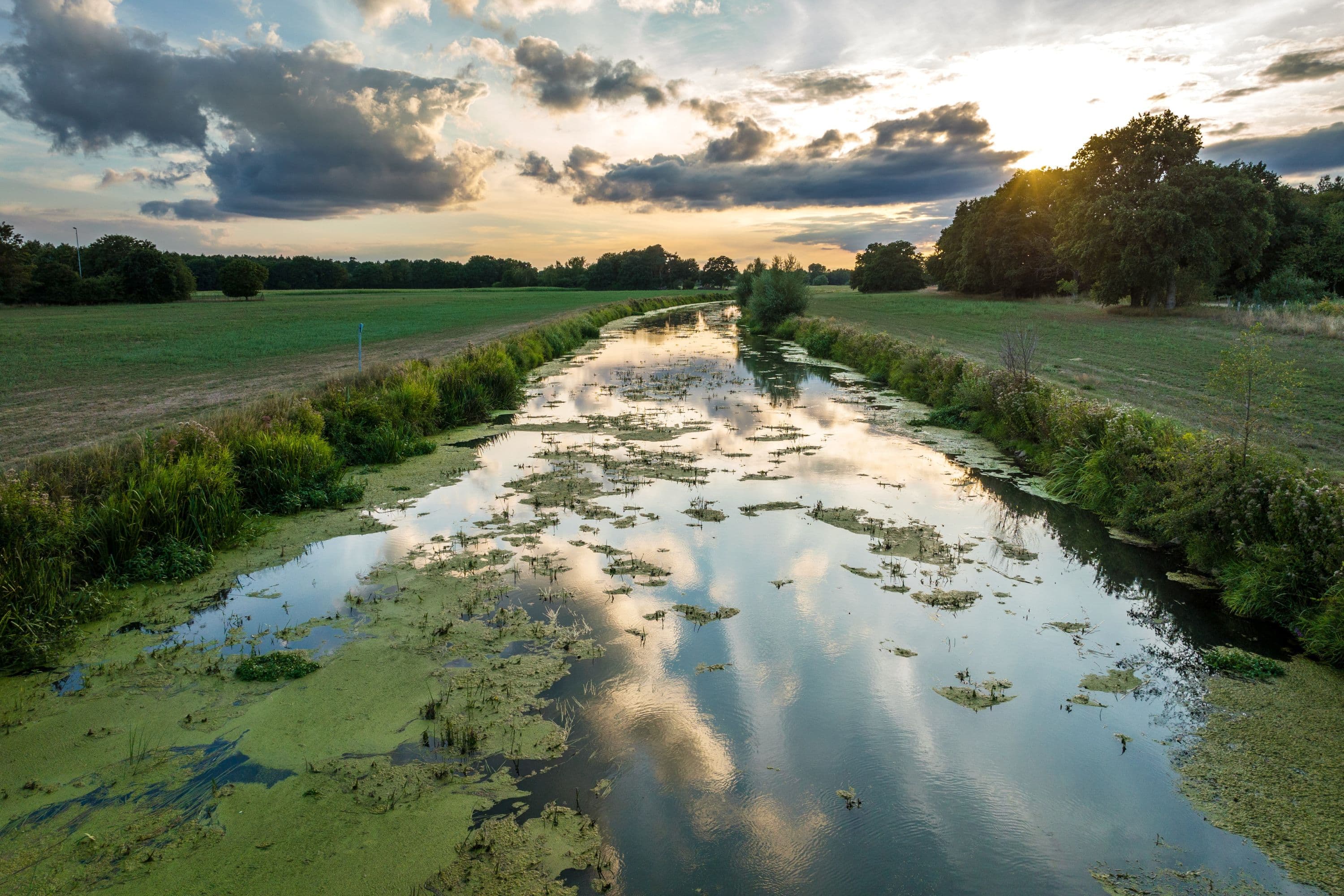
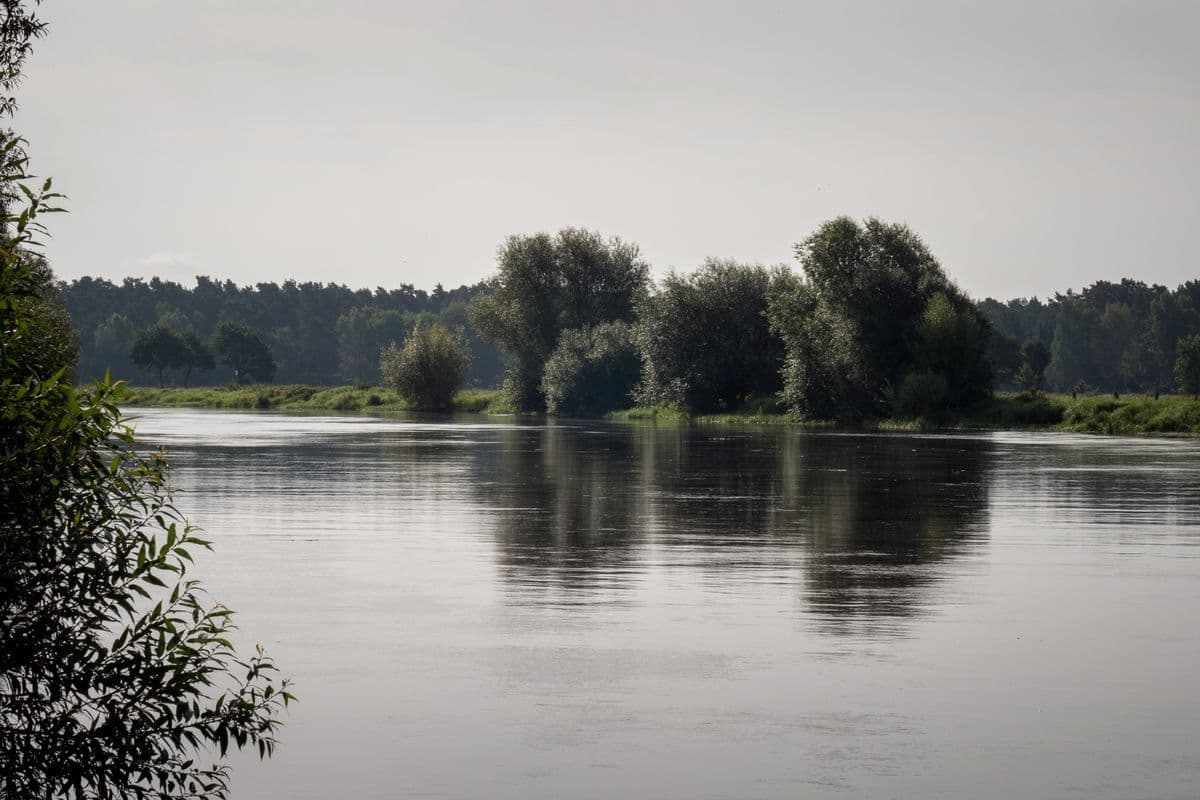
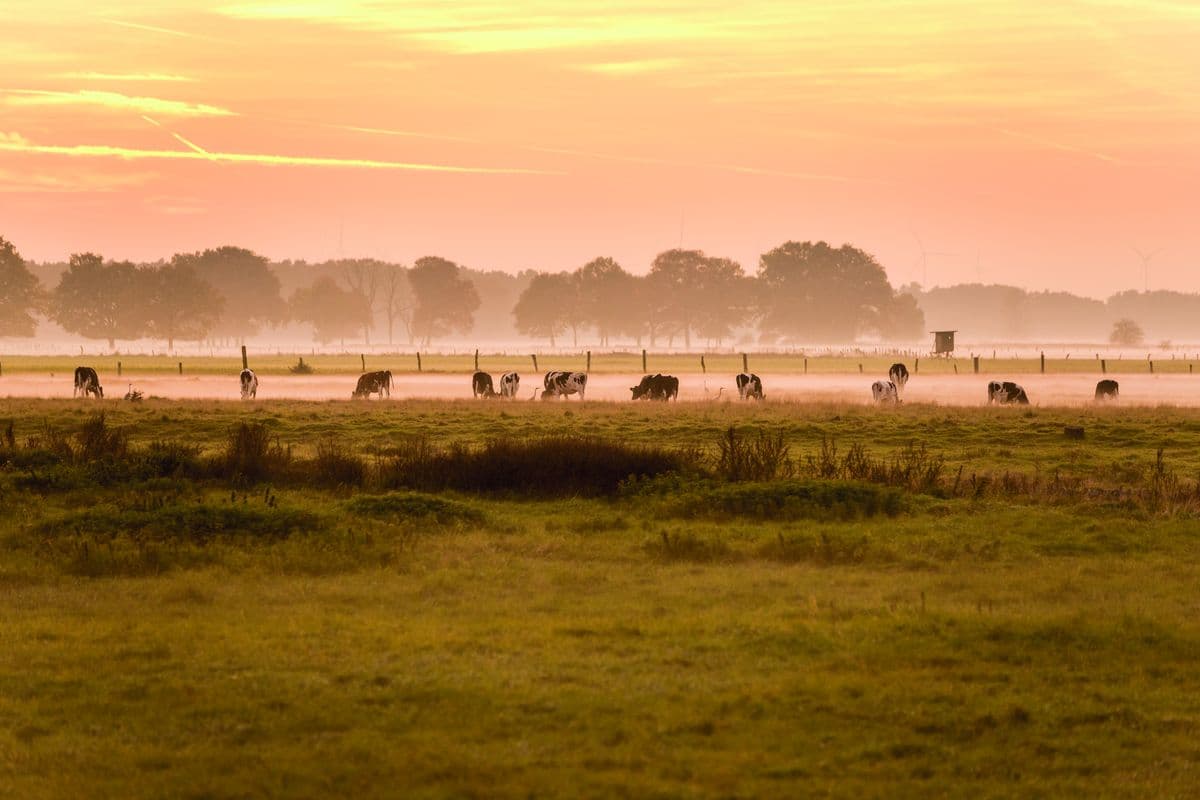
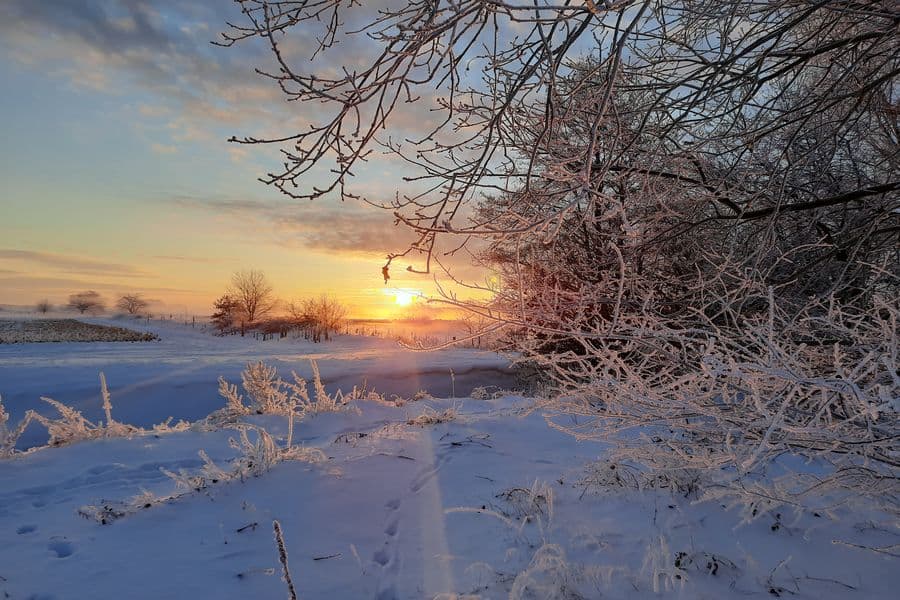
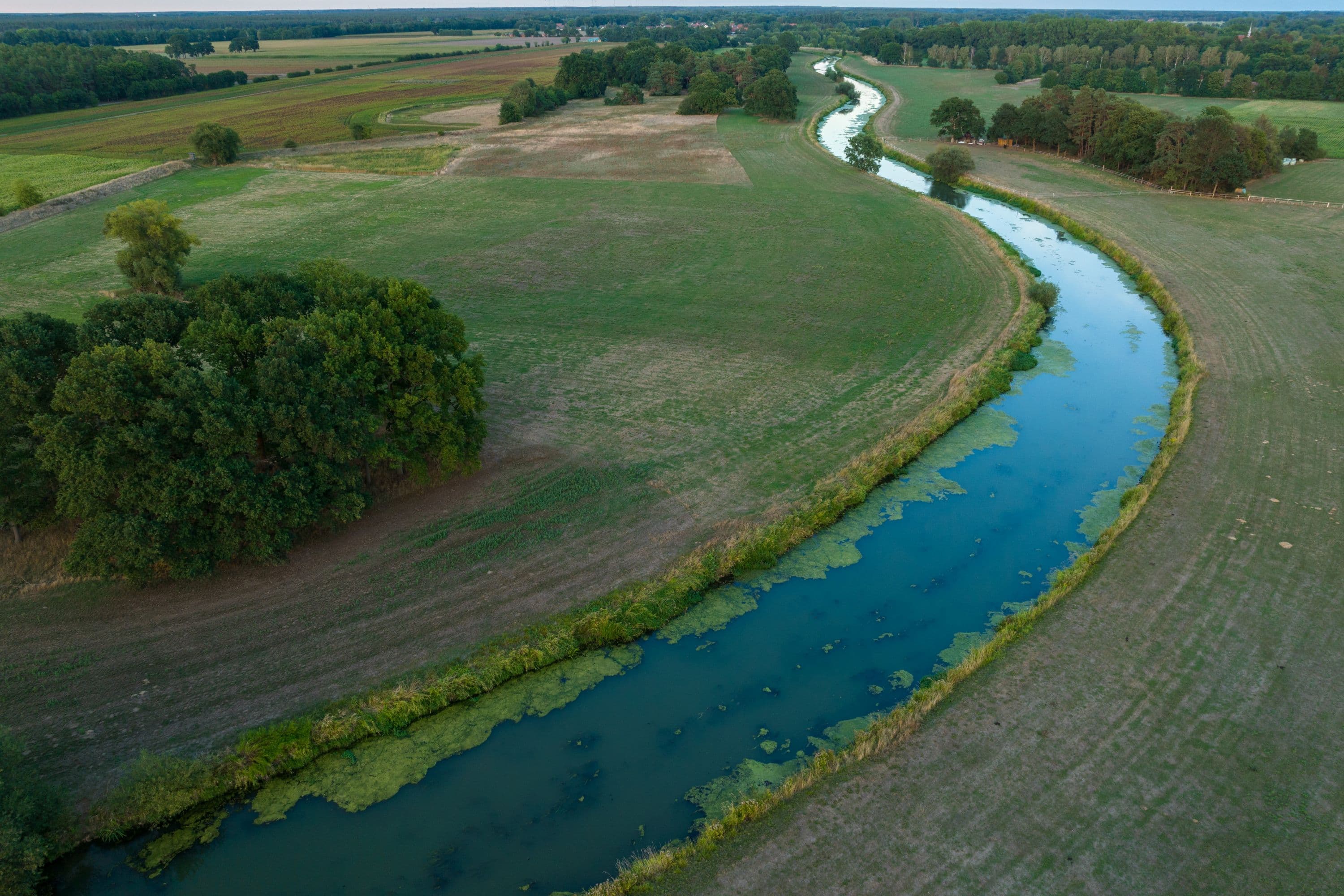
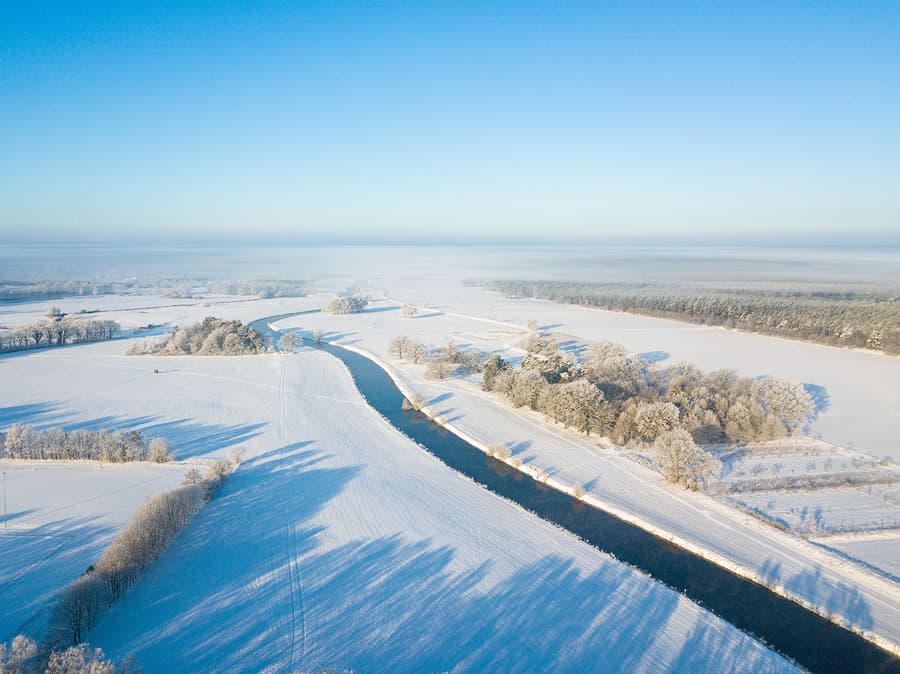
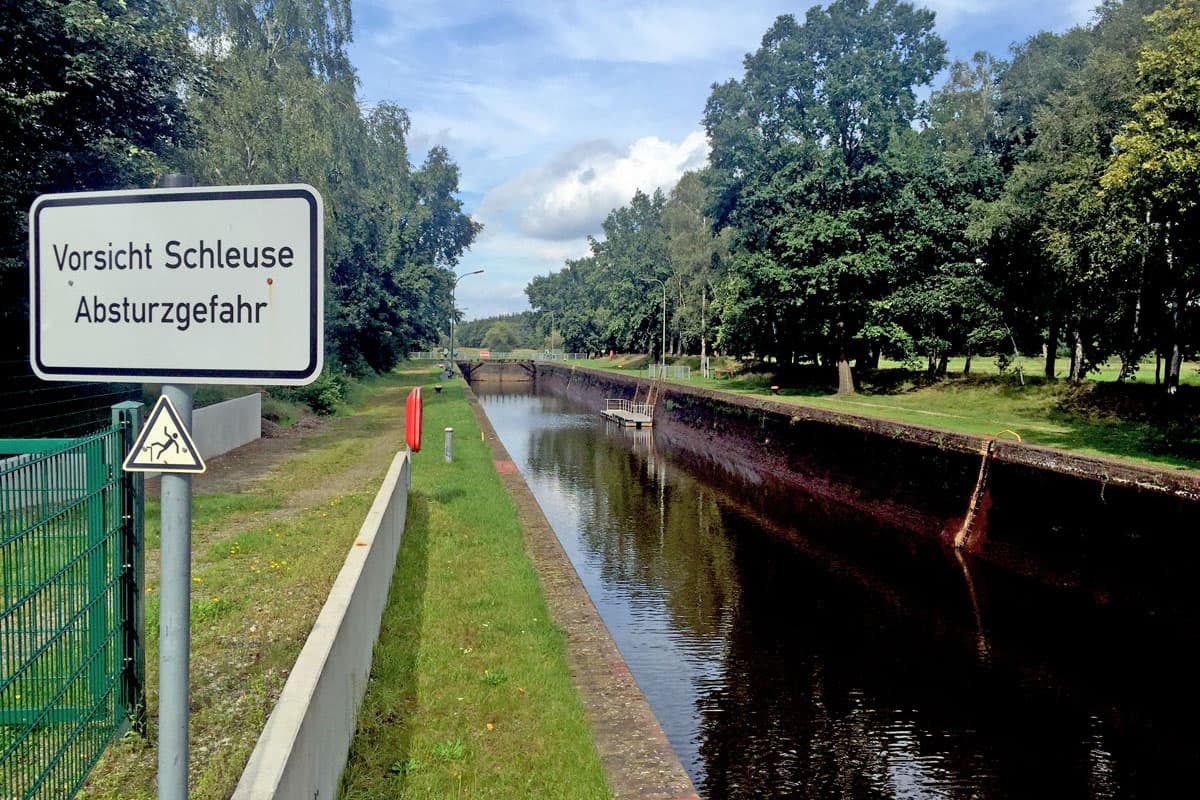
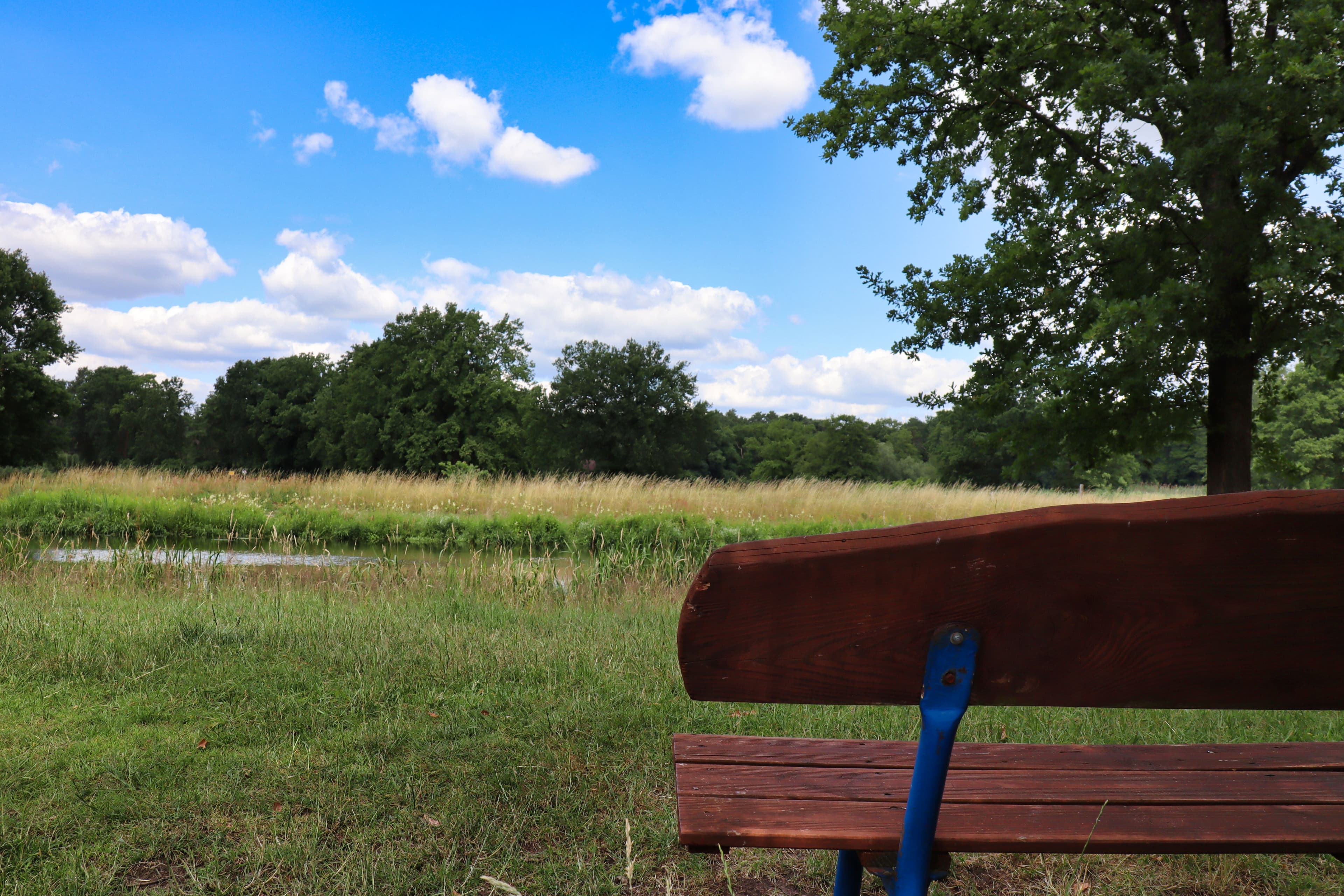
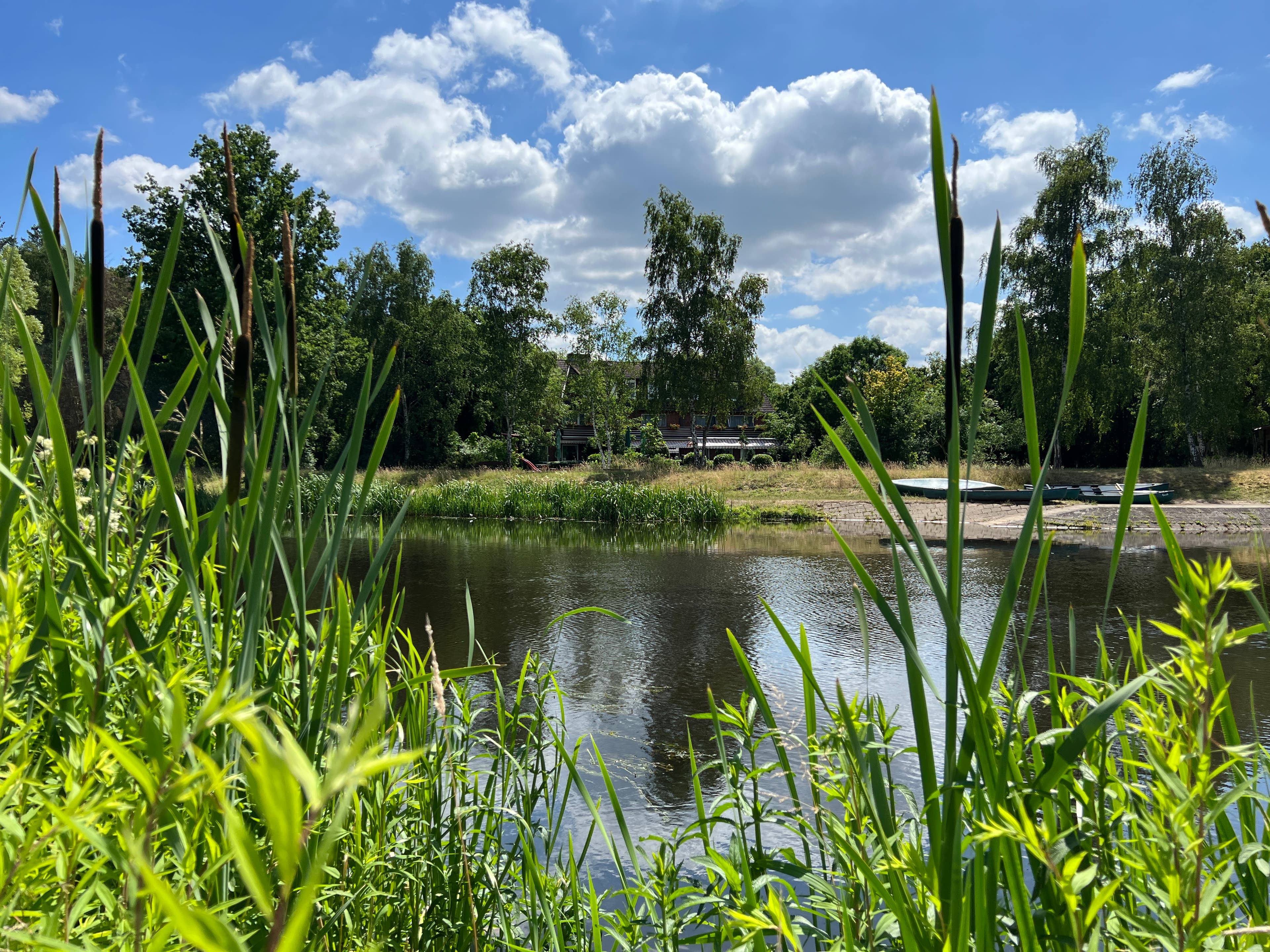
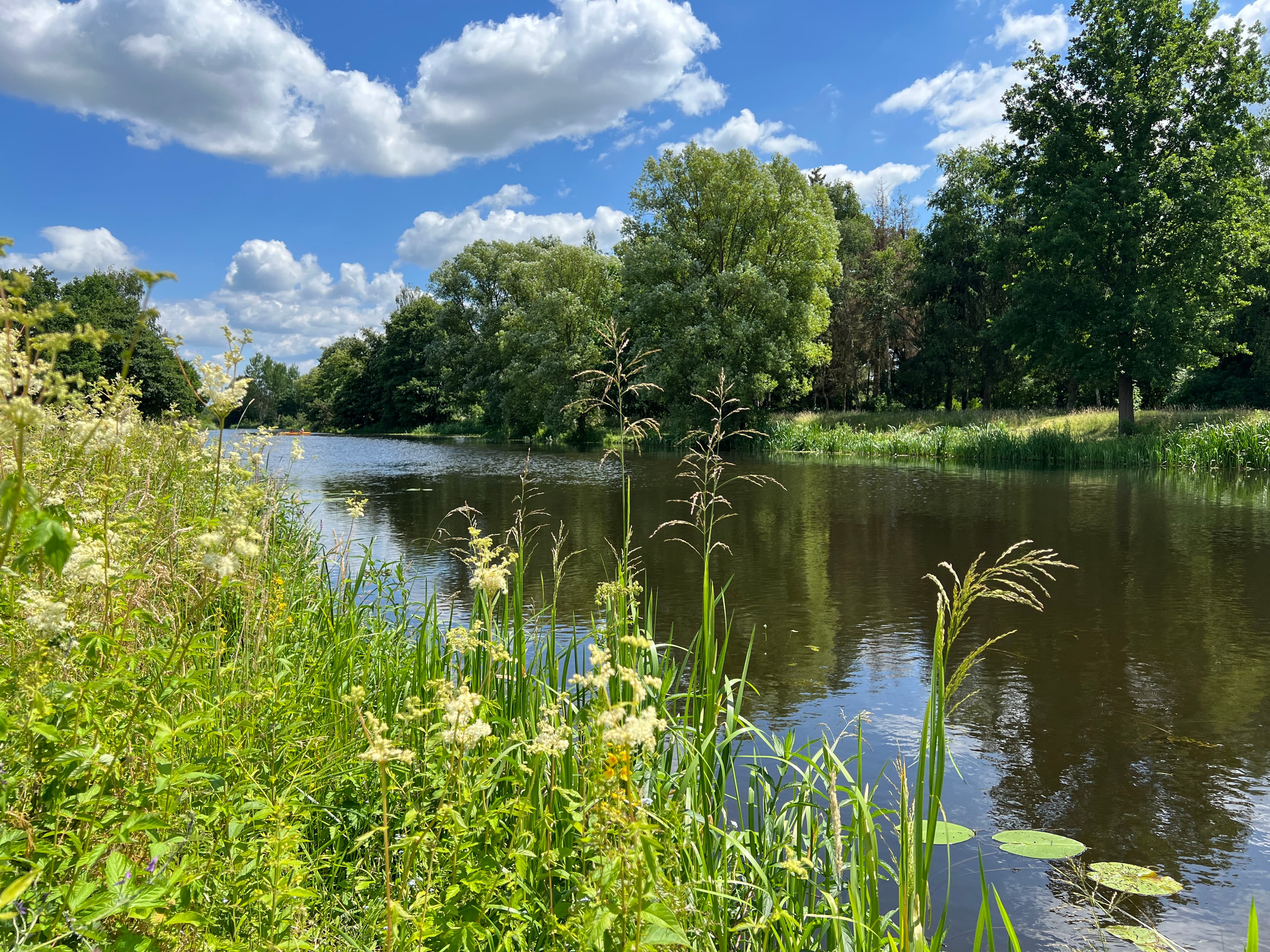
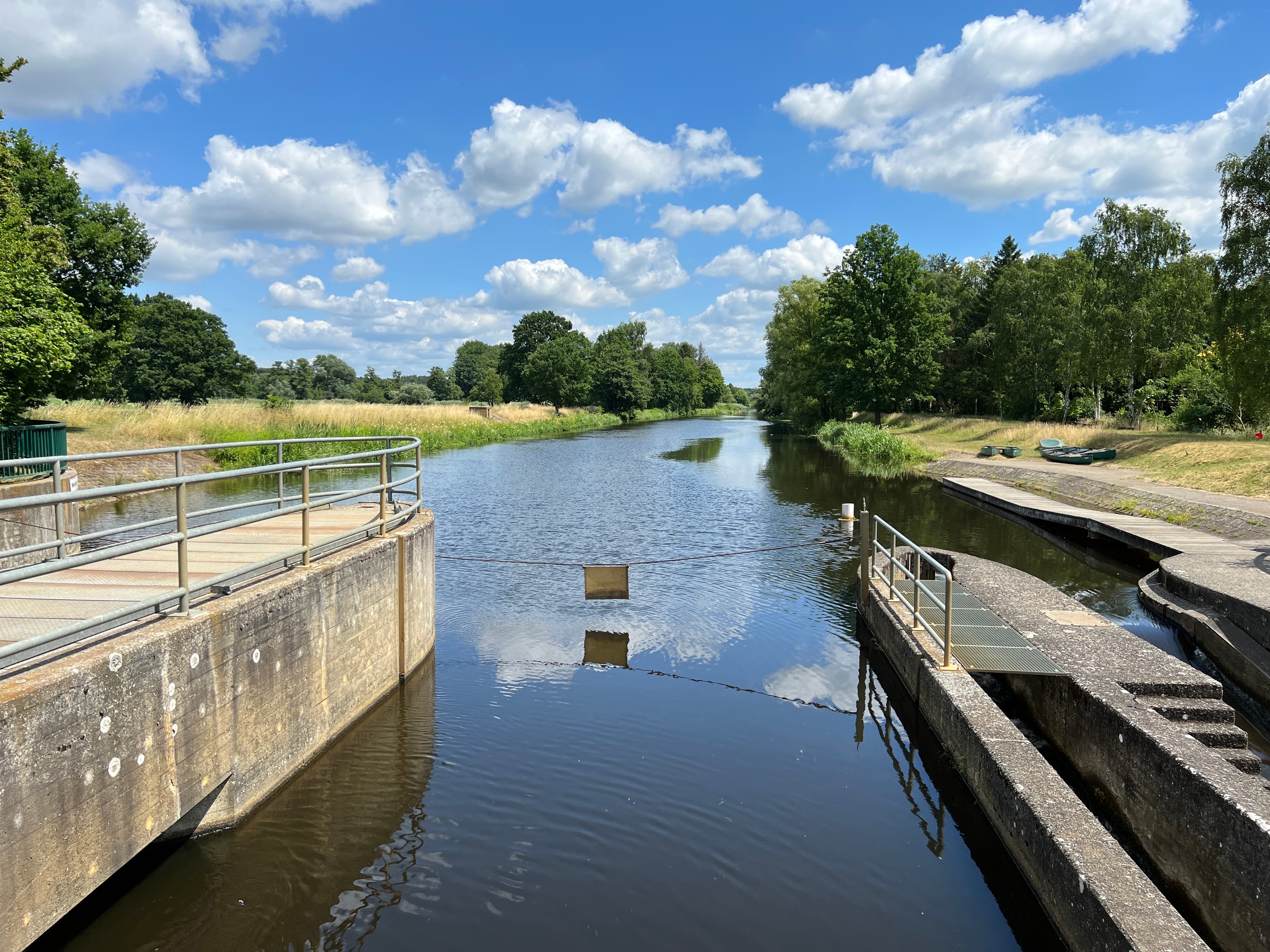
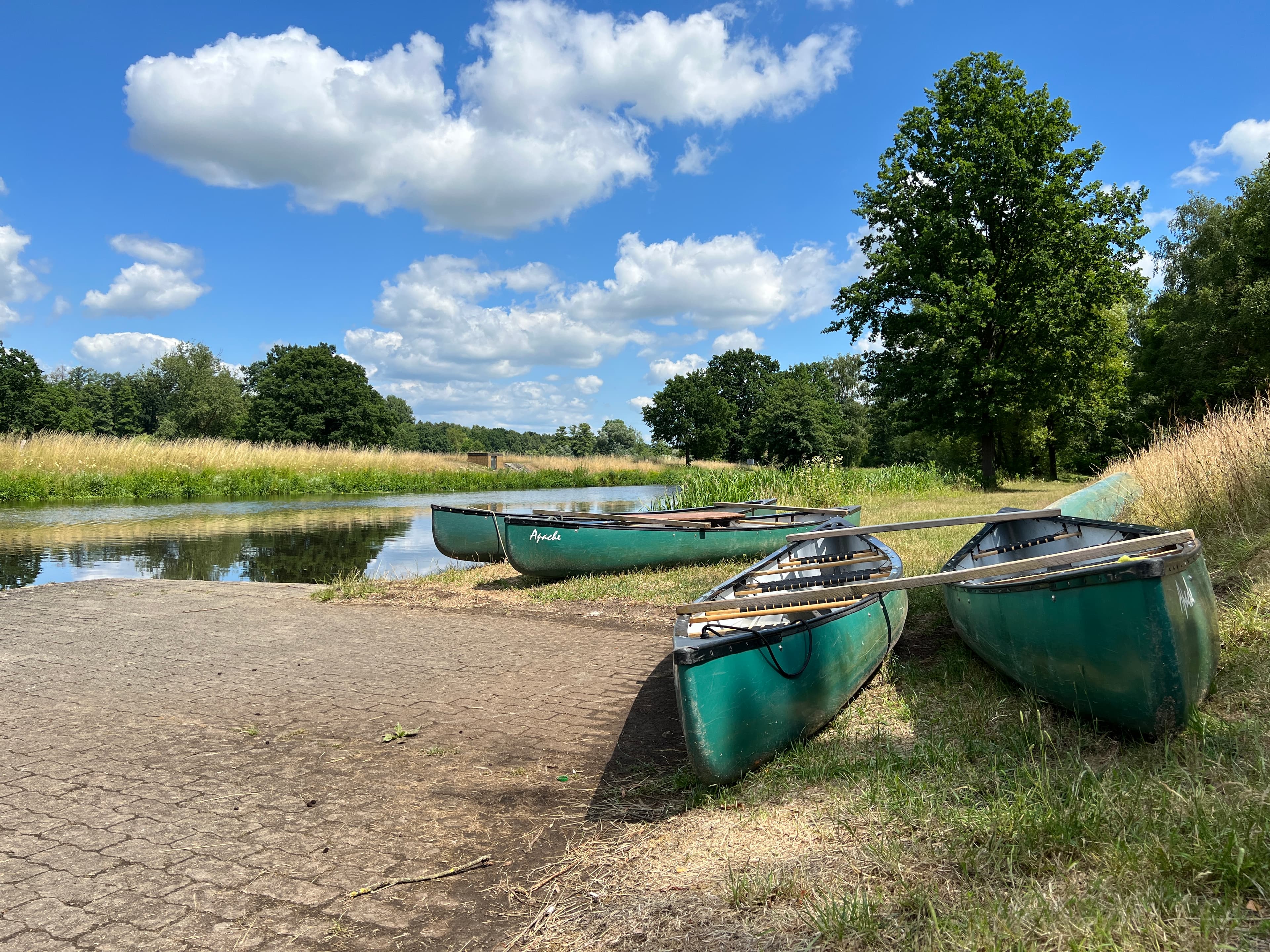
Die Aller
Der Fluss Aller, der gemächlich durch die südliche Lüneburger Heide zieht, entspringt in Sachsen-Anhalt und mündet, als größter nicht ins Meer mündender Fluss in Norddeutschland, in die Weser.Was macht die Aller so besonders?
Das Aller-Leine-Tal ist eine zauberhafte Flusslandschaft, die sich an die Aller anschmiegt. Die Aller ist kein großer Fluss wie beispielsweise die Elbe oder die Weser, aber dafür sehr beeindruckend und wahrhaft romantisch. Breit, still und gemächlich zieht die Aller ihr blau schimmerndes Band schleifenförmig durch das Aller-Leine-Tal.
Ihre ruhige Fließgeschwindigkeit zieht Flusswanderer magisch an und bereitet ihnen naturnahe Stunden in der idyllischen Landschaft. An ihrem Ufer weiden Kühe, Pferde grasen sattgrünes Allergras und sogar Kraniche und Reiher stelzen nach einem Fischfang gemächlich durch die Allerwiesen und genießen die Naturidylle.
Verlauf der Aller
Die Aller entspringt in Sachsen-Anhalt bei Seehausen in der Magdeburger Börde und mündet nach 211 km nordöstlich von Verden in die Weser. Die Flussauen werden meist als Grünland genutzt und die oft feuchten Niederungen bieten ideale Bedingungen für Flora und Fauna. Die Aller fließt durch die Residenzstadt Celle und ist ab dem Hafen schiffbar, so dass sie als Wasserstraße gilt. Sie eignet sich besonders für größere Gruppen und Mehrtagestouren. Entlang des Flusses befinden sich zahlreiche Kanuanbieter, Anleger, Unterkünfte und Campingplätze. Ein- u. Ausstiegsmöglichkeiten sind in Boye, Stedden, Oldau, Winsen (Aller), Weißer Stein, Schleuse Bannetze und Jeversen/Thören an der K65.
Das Aller-Leine-Tal – Heimat vieler Weißstörche
Das Aller-Leine-Tal mit der sauberen Aller und seinen idyllischen Ortschaften ist ein wahres Paradies für Weißstörche. Vor allem die weiten Wiesenflächen entlang der Aller bieten den Weißstörchen genügend Nahrung, um ihre Jungen aufzuziehen. Alljährlich Ende März bis Anfang April kehren die Weißstörche aus ihren warmen Winterquartieren zurück in ihre bestehenden Brutnester und beginnen sich zu paaren. Ein Weißstorch kann bis zu fünf Eier legen und die Brutdauer beträgt zwischen 30-32 Tagen.
Mitte August verabschieden sich die Weißstörche wieder vom Aller-Leine-Tal und ziehen sich zurück in ihre warmen Winterquartiere.
Beste Zeit für Beobachtung der Störche
Die beste Zeit um Alt- und Jungstörche in ihren Nestern zu beobachten ist von Mitte Mai bis Mitte Juli. Anschließend werden die Jungstörche flügge und erkunden die umliegenden Felder und Wiesen. Fast jeder Ort im Aller-Leine-Tal verfügt über ein Storchennest. Manchmal ist es der Schornstein der Bäckerei und manchmal das Dach eines Bauernhofes oder sogar der Kirchturm des Gemeindepastors, auf dem der Storch sein Nest gebaut hat. Erfahren Sie Spannendes über die Störche von unserem Storchen-Pastor!
Radtour von Nest zu Nest
Eine Radtour von Storchennest zu Storchennest ist die schönste Art und Weise den Störchen im Aller-Leine-Tal einen Besuch abzustatten. Zwei 40 km lange ausgewiesene Rundtouren führen Sie direkt zu den Nestern der Störche. Ab Mitte Juli empfehlen wir Ihnen, bereits während des Radelns die Blicke aufmerksam über die Landschaft schweifen zu lassen. Denn dann sind die Jungstörche neugierig, verlassen ihre Nester und sind auf Wiesen und Feldern unterwegs. Schauen Sie auch in einem unserer Storchenkinos vorbei!
Premiumradweg: Aller-Radweg
Der Aller-Radweg ist der Premiumradweg der Lüneburger Heide und führt Sie auf sicheren und gut ausgeschilderten Radwegen entlang der Aller durch das lauschige Urstromtal. Neben abwechslungsreichen Sehenswürdigkeiten wird Ihnen eine technische Rarität begegnen. Zu festen Fährterminen können Sie mit einer historischen Gierseilfähre trockenen Fußes über die Aller fahren.

